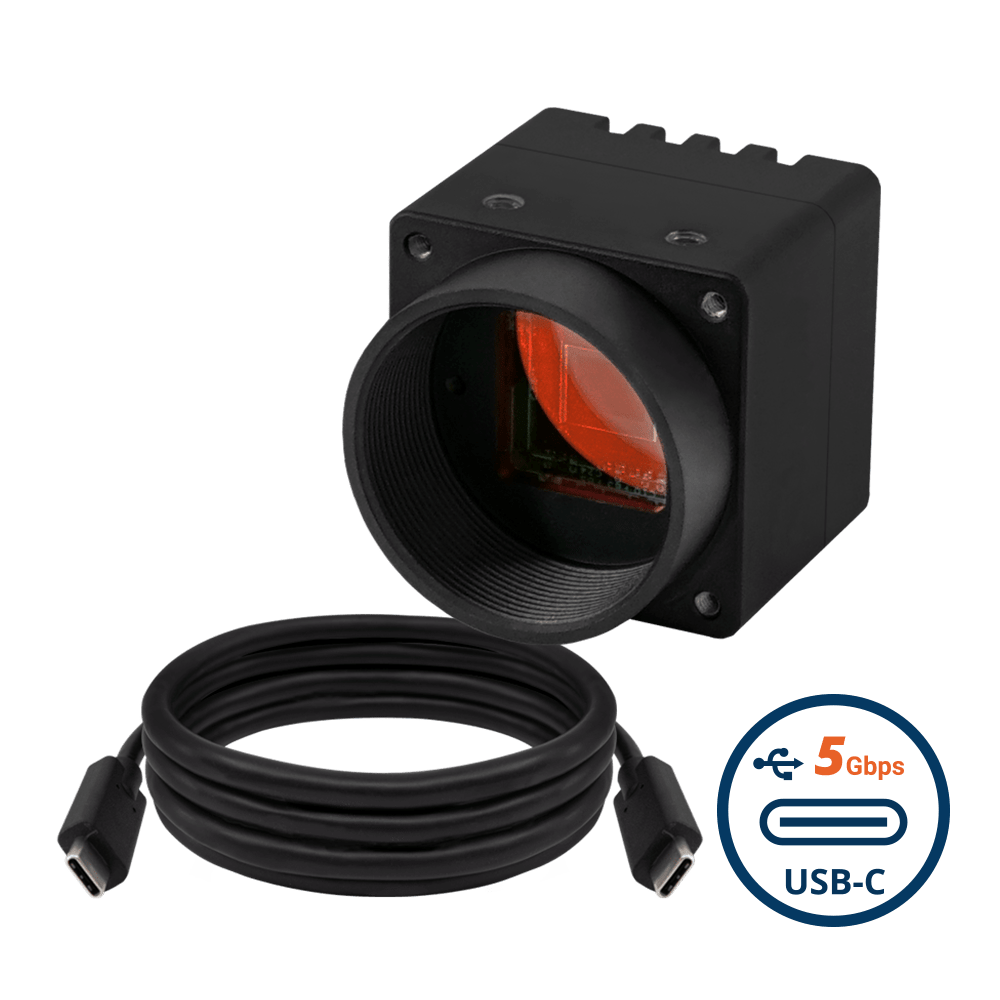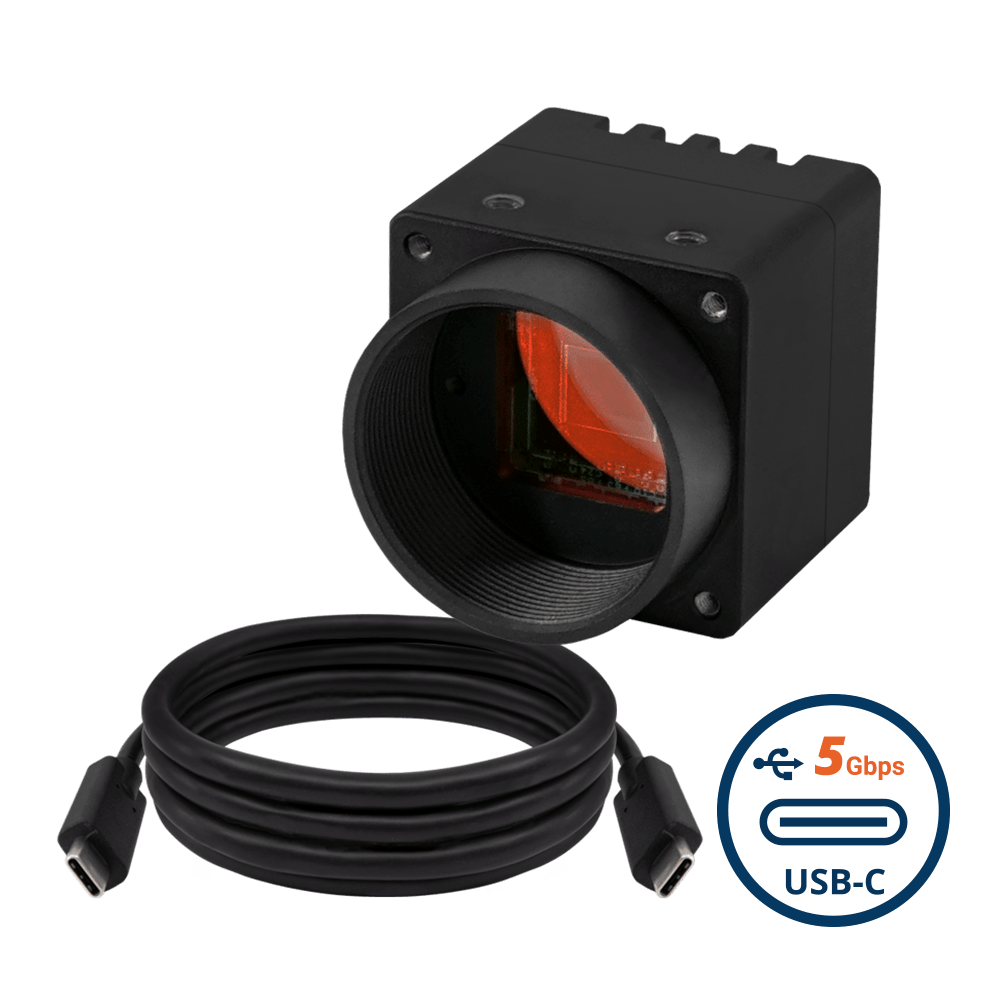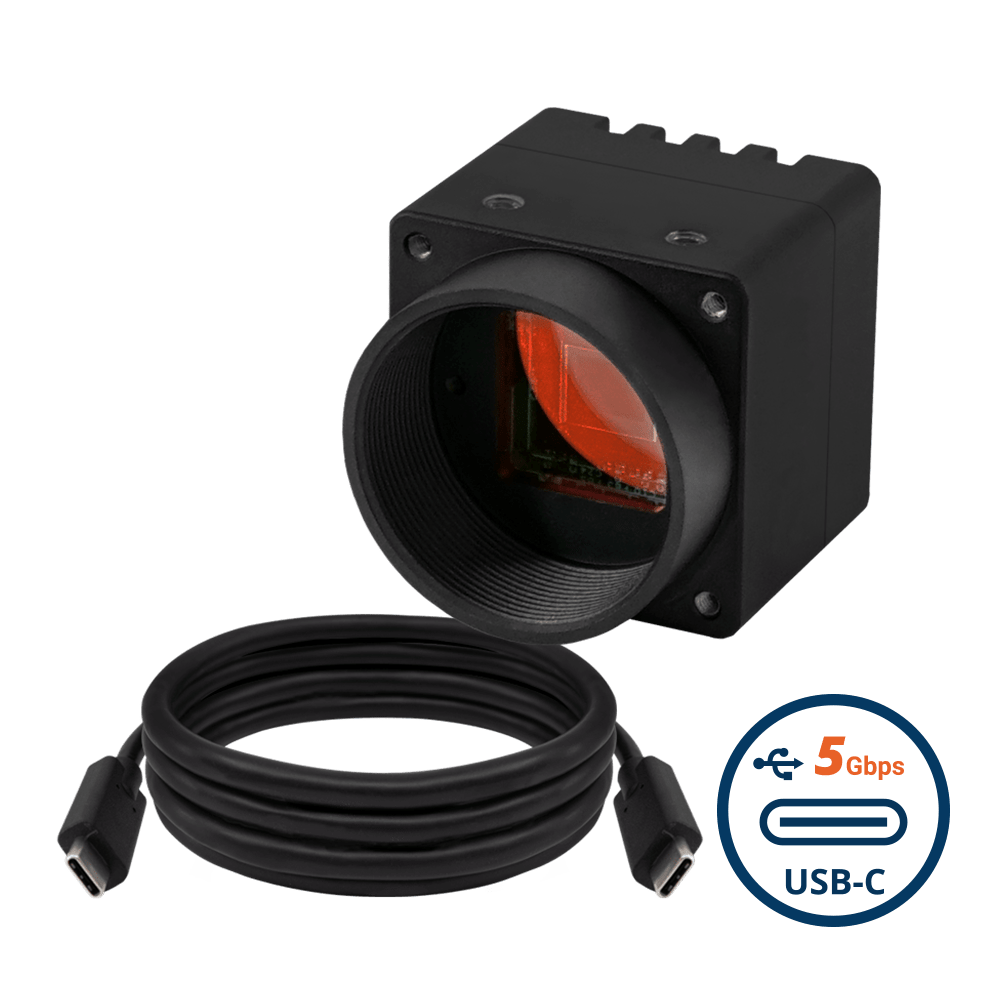In the world of robotics, navigation is a critical aspect that defines how well a robot can perform tasks—whether it’s a self-driving car avoiding pedestrians or a robotic vacuum efficiently cleaning a home. For a robot to move through an environment autonomously, it needs to be equipped with sensors that allow it to “see” and interpret its surroundings. These sensors act as the robot’s eyes, ears, and even its sense of touch, guiding it to avoid obstacles, map environments, and make decisions in real-time.
Imagine a warehouse robot tasked with moving inventory across a large, bustling facility. It needs to navigate narrow aisles, avoid other robots and human workers, and accurately place or retrieve products from shelves. Without the right sensors, the robot would either crash into obstacles or become inefficient, frequently stopping to reassess its surroundings.
In this blog post, we’ll explore different types of sensors that are revolutionizing robotics navigation, from high-resolution cameras to LiDAR systems and beyond.
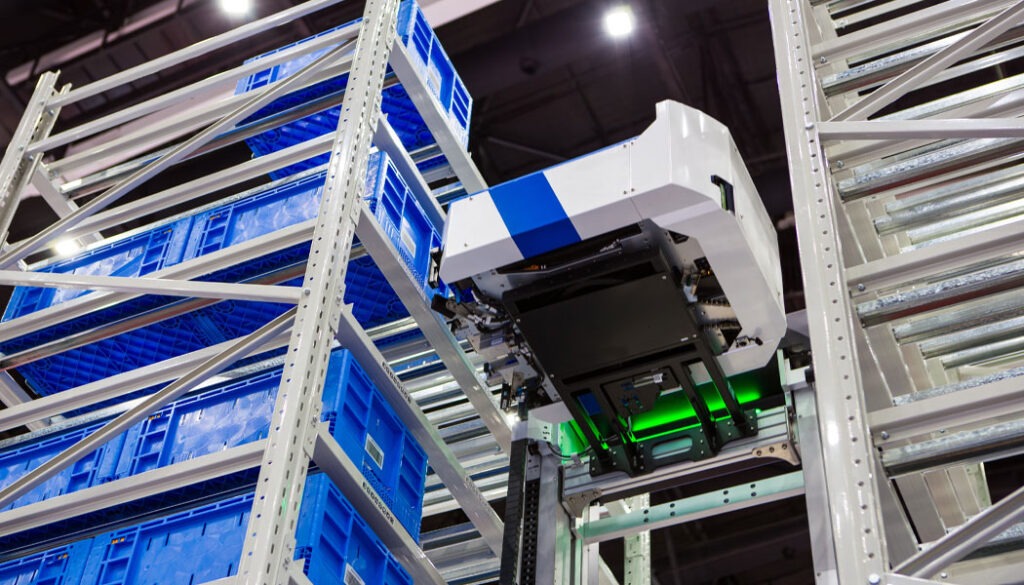
A warehouse robot
The Importance of Navigation in Robotics
Navigation is the ability of a robot to determine its position in an environment, plan a path to a desired destination, and move to that point, all while avoiding obstacles along the way. This capability is essential to any autonomous system, whether it’s a delivery drone, a robotic vacuum, or a warehouse robot.
Without navigation, autonomous mobile robots would be unable to interact with or move through their surroundings effectively, reducing their utility to little more than stationary machines.
For instance, a robot tasked with navigating a dynamic environment must continuously assess its surroundings, detect potential obstacles, and adjust its route to avoid collisions. Additionally, in large and complex spaces, such as warehouses or outdoor terrains, navigation requires continuous mapping to ensure that the robot can chart an efficient and safe path.
The Evolution of Sensor Technology
The evolution of sensor technology has significantly transformed how robots navigate. In the early days of robotics, simple sensors like bump detectors and basic proximity sensors allowed for minimal awareness of the robot’s surroundings. These systems were often inaccurate and could only detect obstacles directly in front of them, leading to frequent collisions or inefficient movements.
As technology has advanced, so too have the capabilities of robotic navigation systems. Today, robots rely on sophisticated sensors such as LiDAR, embedded cameras, and depth sensors that provide detailed, real-time information about their environments. These sensors allow robots to create 3D maps, detect obstacles from greater distances, and perform tasks with pinpoint precision.
With the addition of advanced algorithms and sensor fusion, robots can now navigate even the most complex environments with a high level of autonomy. This advancement not only improves the functionality of robots but also opens new possibilities.
Key Challenges in Robotics Navigation
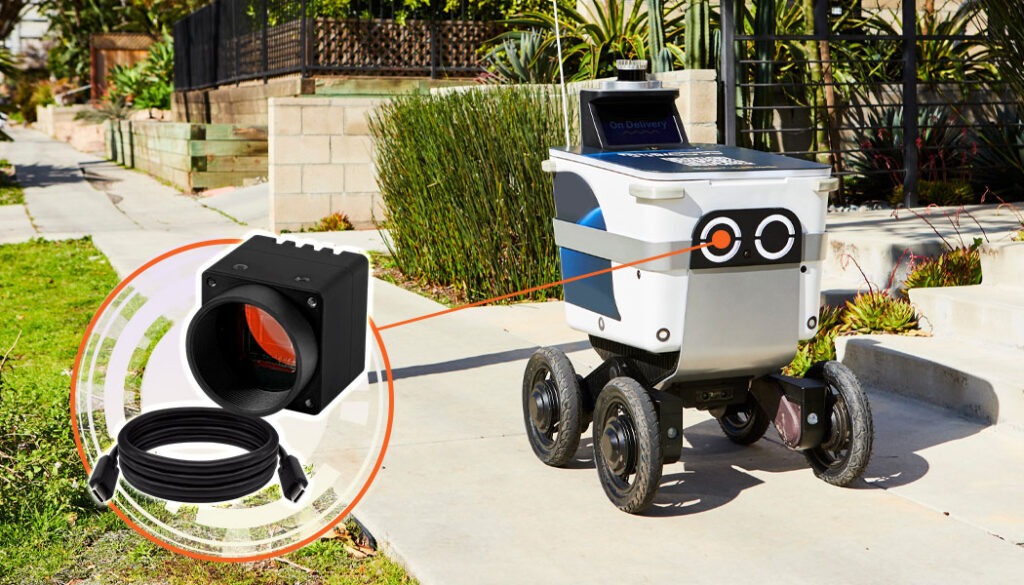
Delivery Robot
Before we look at the types of sensors used for robotics navigation, it’s important to understand the key challenges that robots face while navigating their environments. Whether indoors or outdoors, robots must contend with a range of complexities that can affect their performance.
In indoor environments like warehouses or homes, obstacles such as furniture, narrow pathways, or other robots can make navigation difficult. Outdoor environments present even greater challenges, from unpredictable terrains to varying weather conditions.
A delivery robot, for example, may need to cross uneven surfaces, navigate through crowds, and handle sudden changes in weather like rain or snow. These factors make it essential for robots to have robust navigation systems capable of adapting in real-time.
One of the biggest challenges robots face is the lack of proper sensor integration. Without a combination of reliable sensors, robots may experience blind spots, poor spatial awareness, and issues with precision. For instance, a robot using only a standard camera might struggle in low-light conditions. Similarly, a robot relying solely on ultrasonic sensors may have difficulty detecting objects beyond a certain range.
Accurate localization and mapping are critical to overcoming these challenges. Localization allows a robot to know its exact position in the environment, while mapping helps it understand the layout and identify obstacles.
Advanced sensors such as LiDAR and depth cameras, combined with algorithms like SLAM (Simultaneous Localization and Mapping), enable robots to create detailed maps in real-time and adjust their movements accordingly. Without these, navigating dynamic environments would be nearly impossible for robots, making sensor integration and precision vital for successful autonomy.
Types of Sensors Used in Robotics Navigation
In robotics navigation, various types of sensors are utilized to gather data about the robot’s environment, enabling it to move autonomously and efficiently. These include:
LiDAR
LiDAR (Light Detection and Ranging) is a powerful sensor technology that uses laser pulses to measure distances with exceptional precision. By emitting rapid laser beams and recording the time it takes for the reflected light to return, LiDAR systems create detailed, three-dimensional maps of the environment. This capability is particularly valuable for robotics navigation, where accurate spatial awareness is critical for safe and efficient movement.
In practical applications, such as autonomous vehicles, LiDAR plays a crucial role in detecting obstacles, mapping road conditions, and recognizing traffic signals. For instance, a self-driving car equipped with LiDAR can analyze its surroundings in real-time. This allows it to navigate complex urban environments by identifying pedestrians, other vehicles, and potential hazards.
Advantages:
LiDAR is renowned for its high-resolution mapping capabilities and long-range detection. This capability makes LiDAR ideal for environments that require detailed spatial information. It performs well in various lighting conditions, providing consistent data regardless of day or night.
Disadvantages:
However, LiDAR systems can be sensitive to weather conditions, particularly heavy rain or fog, which may scatter the laser beams and reduce detection accuracy. LiDAR also tends to be on the expensive side compared to other types of sensors.
Ultrasonic Sensors
Ultrasonic sensors are widely used in robotics navigation for their ability to detect nearby objects and measure distances using sound waves. These sensors emit high-frequency sound pulses that travel through the air and reflect off obstacles. Calculating the time it takes for the echoes to return, the sensor determines the distance to the object, providing crucial data for navigation.
A common application of ultrasonic sensors can be found in robotic vacuum cleaners. These devices use ultrasonic sensors to navigate around furniture and walls, ensuring efficient cleaning without collisions. Ultrasonic sensors continuously measure the distance to nearby surfaces by which the robot can adjust its path, effectively avoiding obstacles.
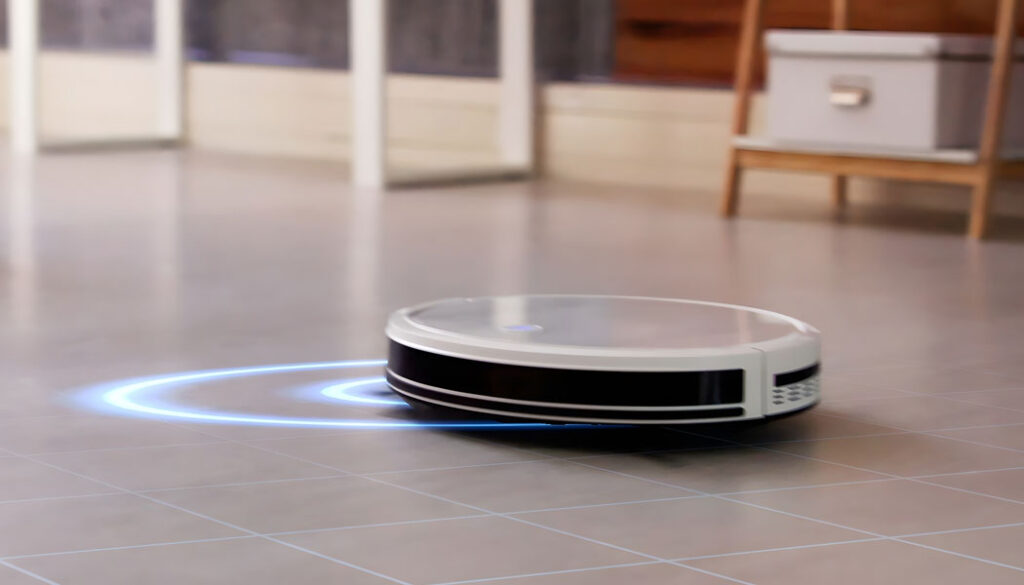
A robotic vacuum cleaner
Advantages:
One of the primary benefits of ultrasonic sensors is their cost-effectiveness and simplicity. They are also relatively easy to integrate into various robotic systems and provide reliable measurements at short to medium ranges.
Disadvantages:
However, ultrasonic sensors do have limitations. Their accuracy can decrease at longer distances, and they may struggle with detecting soft or absorbent materials, which can dampen sound waves.
Infrared (IR) Sensors
Infrared (IR) and Near-Infrared (NIR) sensors are essential components in robotics navigation, utilizing infrared light to detect objects and measure distances. These sensors emit IR light and then capture the reflected light from nearby surfaces. Analyzing the intensity and timing of the reflected signals, IR sensors can determine the proximity of objects, making them useful for various applications.
A practical example of these sensors in action can be seen in line-following robots. These robots use IR sensors to detect the edges of a path or line, enabling them to navigate smoothly along designated routes. By continuously monitoring the reflected IR light, the robot can make adjustments to stay on track, effectively avoiding deviations.
Advantages:
IR sensors are valued for their ability to capture image data in the IR spectrum, making robotic navigation possible even under low light. This is extremely helpful in robots that have to operate at night.
Disadvantages:
However, IR sensors can face challenges in bright lighting conditions, where ambient light may interfere with the detection of reflected signals. This limitation can affect their accuracy and effectiveness in certain scenarios.
Inertial Measurement Units (IMUs)
Inertial Measurement Units (IMUs) are critical components in robotics navigation, combining accelerometers and gyroscopes to measure and track a robot’s acceleration, rotation, and orientation.
Accelerometers detect changes in velocity along different axes, while gyroscopes measure rotational movement. Together, these sensors provide real-time data on the robot’s motion, allowing for precise control and stabilization.
IMUs are particularly valuable in applications where maintaining balance and orientation is crucial. For instance, in drones, IMUs help keep the aircraft stable during flight by continuously adjusting its position based on data about its orientation and movement. This ensures smooth and controlled flight, even in windy conditions or when performing complex maneuvers.
Advantages:
IMUs provide crucial information for maintaining stability and orientation, enhancing the robot’s ability to perform precise movements.
Disadvantages:
One challenge with IMUs is their susceptibility to drift over time. Small errors in measurement can accumulate, leading to inaccuracies in positioning.
GPS (Global Positioning System)
GPS (Global Positioning System) is a satellite-based navigation technology that provides precise location data by triangulating signals from multiple satellites orbiting the Earth. This technology enables robots to determine their exact geographic position, making it essential for applications that require accurate location tracking over large areas.
In precision farming, for example, GPS is used in autonomous robots to navigate fields with high accuracy. This allows the robots to perform tasks such as planting, fertilizing, and harvesting with minimal manual intervention, improving efficiency and accuracy.
Advantages:
GPS offers broad coverage and high accuracy in outdoor environments, making it invaluable for navigation over large distances. It provides consistent location data, crucial for tasks requiring precise geographical positioning.
Disadvantages:
However, GPS signals can be weak or unavailable indoors or in areas with significant obstructions. This limitation can hinder the effectiveness of GPS-based navigation in certain environments, such as indoor warehouses.
Cameras and Vision Sensors
Cameras and vision sensors are crucial for advanced robotics navigation, providing rich visual data that enhances a robot’s ability to interpret and interact with its environment.
Monochrome Cameras are the simplest form of vision sensors, capturing images in shades of gray. While they do not provide color information, monochrome cameras are highly effective for tasks that do not require color differentiation, such as detecting edges or contrasts. These cameras are often used in environments where lighting conditions are consistent and color data is not critical.
Color Cameras extend the functionality of monochrome cameras by capturing images in full color. This capability is essential for tasks that involve recognizing and distinguishing between various colors and patterns. Color cameras are widely used in autonomous vehicles for traffic signal recognition and in robotic inspection systems where color variations are significant.
Also read: Monochrome Camera vs. Color Camera: All You Need to Know
Stereo Cameras feature two lenses placed at slightly different angles, mimicking human binocular vision. Stereo cameras can perceive depth and three-dimensional structure by analyzing the disparity between the two images. This depth perception is invaluable for tasks such as obstacle avoidance and navigating complex environments.
Depth Cameras provide detailed distance information using techniques such as structured light or time-of-flight (LiDAR is a type of time-of-flight technology and is often categorized under cameras. Stereo cameras are also considered depth cameras). These cameras emit light patterns and measure the time it takes for the light to return after reflecting off objects.
Depth cameras make accurate obstacle and object detection possible. For example, applications that require precise spatial awareness, such as robotic arms used in assembly lines or autonomous drones that need to navigate tight spaces, depth cameras are a must-have.
RGB-D Cameras combine traditional RGB color imaging with depth perception in a single device. They provide a comprehensive view of the environment by capturing both color and depth information simultaneously. This combination is particularly useful for applications that require both detailed object recognition and precise spatial mapping.
TechNexion offers a range of embedded vision cameras that can be easily integrated into robotic systems to enhance their navigational capabilities and operational efficiency. These cameras are packed with advanced features such as:
- high megapixel resolution for sharp, detailed imagery,
- HDR (High Dynamic Range) support for superior performance in varied lighting conditions, and
- support for multiple interfaces including USB, MIPI, GMSL2 and FPD-Link III.
Sensor Fusion in Robotics Navigation
Sensor fusion is the process of combining data from multiple sensors to enhance the accuracy and reliability of a robotic system’s perception and navigation capabilities. Integrating information from different sensor types, such as LiDAR, cameras, and IMUs, sensor fusion creates a more comprehensive and precise understanding of the robot’s environment.
As seen earlier, each sensor has its strengths and limitations. For instance, while LiDAR provides accurate distance measurements and detailed environmental mapping, it may lead to exceeding your project’s budget. Cameras offer rich visual data but can be affected by lighting conditions.
Sensor fusion combines these diverse techniques to compensate for individual weaknesses, providing a more robust and reliable system. This integrated approach allows robots to maintain accuracy and functionality across various environments and conditions.
Common Sensor Combinations:
- LiDAR + IMU: This combination is often used in autonomous vehicles. LiDAR maps the environment in high detail, while the IMU provides information on the vehicle’s orientation and motion. By fusing these data sources, the system can accurately interpret and respond to dynamic obstacles and changes in the robot’s position.
- Camera + GPS: Used in outdoor navigation systems, such as drones or autonomous delivery vehicles. Cameras capture visual information for object recognition and navigation, while GPS provides precise location data. Together, they enable robots to navigate complex environments, follow predefined paths, and avoid obstacles based on both spatial and visual cues.
The Role of AI and Machine Learning in Sensor-Based Navigation
Artificial Intelligence (AI) and Machine Learning (ML) are transformative forces in sensor-based robotics navigation, driving advancements in how robots interpret and react to their surroundings. These technologies enable robots to make intelligent decisions based on complex and varied sensor data, significantly enhancing their autonomous capabilities.
AI algorithms are essential for processing and interpreting the vast amounts of data generated by sensors. Traditional sensors provide raw data, but AI algorithms analyze this data to extract meaningful patterns and insights.
For instance, AI can differentiate between different types of obstacles, recognize landmarks, and even predict potential hazards based on historical data. This capability is crucial for tasks such as object recognition, path planning, and real-time decision-making.
Machine learning algorithms enable robots to learn from sensor data and adapt their behavior over time. These algorithms are trained on large datasets to identify patterns and make predictions.
For example, a robot using ML can learn to recognize various objects and their distances from the sensor data, allowing it to adjust its path dynamically. As the robot encounters new scenarios, the ML model continues to improve by learning from its experiences, making it increasingly adept at handling diverse and unpredictable environments.
Wrapping Up
As the field of robotics continues to evolve, advanced sensor technology and intelligent algorithms are key to achieving precise and reliable navigation. Sensor fusion enhances the robot’s ability to interpret and react to dynamic conditions, while AI-driven data analysis enables real-time decision-making and continuous improvement.
As robotics applications become more sophisticated, the role of advanced sensor technologies and AI will only grow more critical. Embracing these innovations allows for enhanced performance in diverse scenarios, from autonomous vehicles to industrial robots.
TechNexion is at the forefront of this technological advancement, offering cutting-edge embedded vision cameras and system on modules designed to seamlessly integrate into robotic systems. Our cameras are engineered to provide exceptional accuracy and reliability, empowering robots to perform complex tasks with confidence. To explore how TechNexion’s solutions can elevate your robotics systems, feel free to contact us.
Related Products
Get a Quote
Fill out the details below and one of our representatives will contact you shortly.

